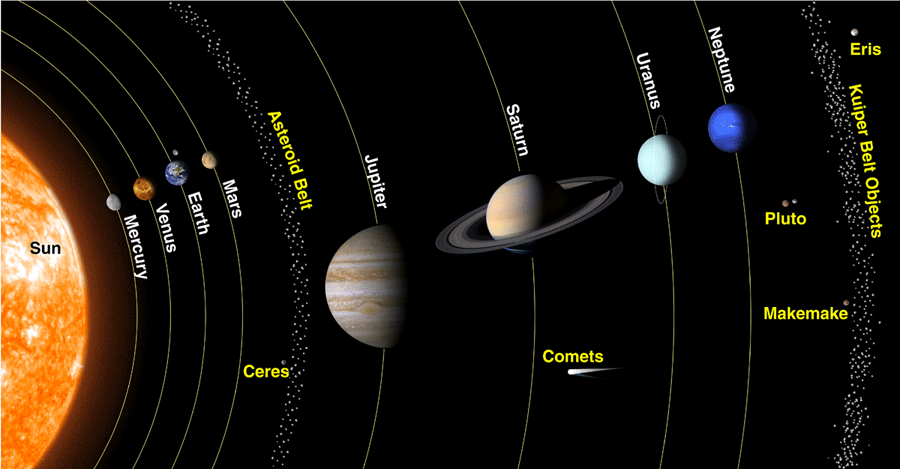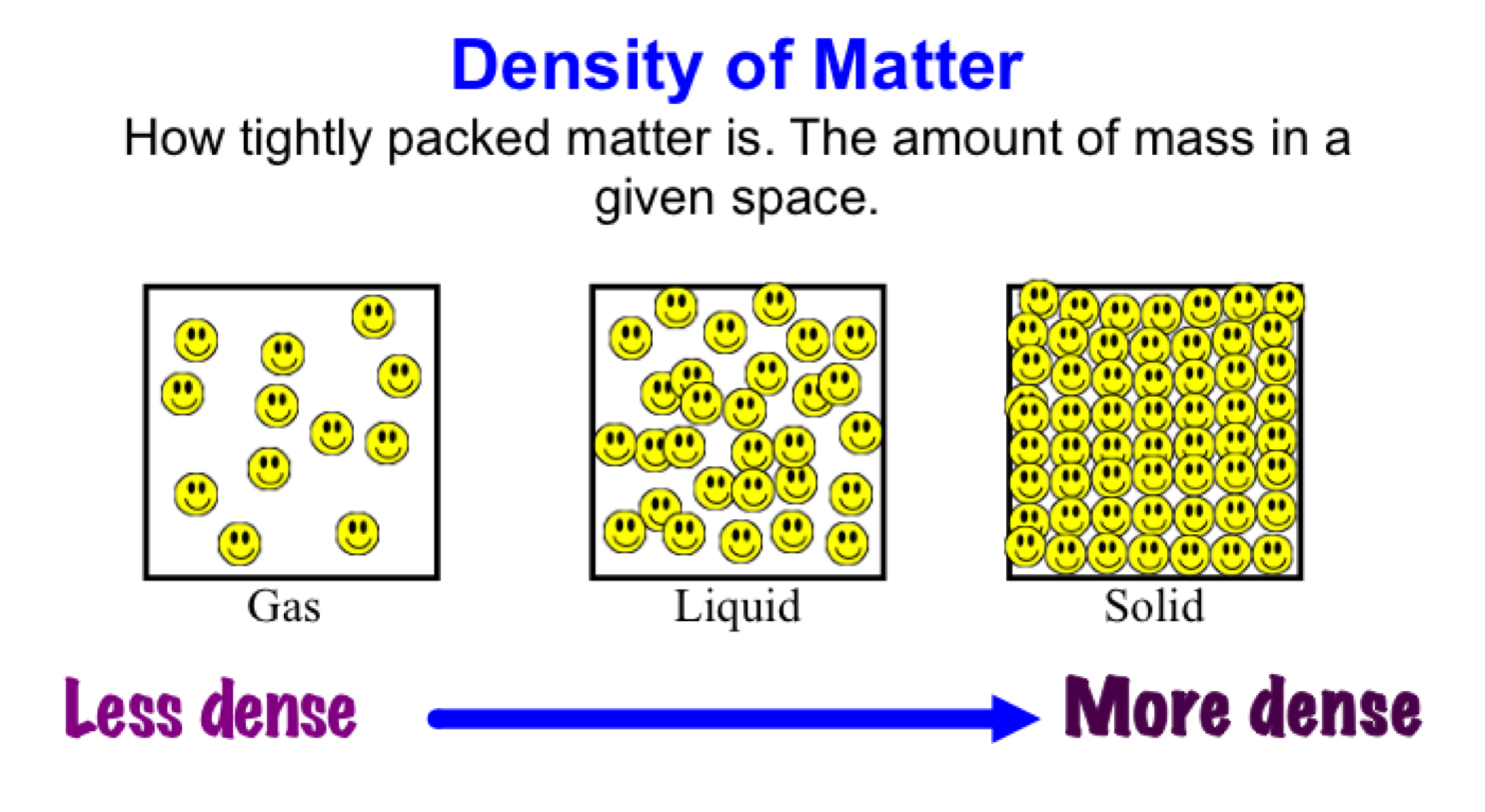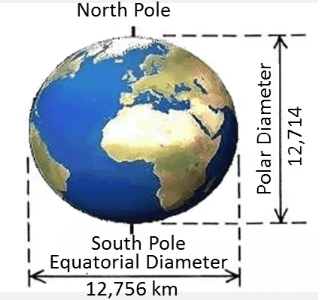2.3 - The Earth and Planets
Watch: Instructor's Video Links to an external site.
The Earth in the Solar System
The Earth is the third planet from the Sun, located between Venus and Mars, 93 million miles from the Sun. It is one of the Inner or Terrestrial Planets. These planets include: Mercury, Venus, Earth and Mars. The remaining planets; Jupiter, Saturn, Uranus and Neptune; are called the Outer or Jovian Planets. There are major differences between the Inner and Outer Planets. They are summarized in this Table:
Inner or Terrestrial Planets |
Outer or Jovian Planets |
|---|---|
| Smaller | Larger |
| More Dense | Less Dense |
| Rotate more slowly | Rotate more quickly |
| Less Oblate | More Oblate |
| Rocky | Gaseous Giants |
Defining Terms
Size - Jupiter is the largest of the Outer Planets and has a diameter of 86,881 miles while Earth, the largest of the Inner Planets, only has a diameter of 7,917 miles.
Density - Density is how much mass is in an equivalent volume. The formula is D = M/V (where D is density, M is mass and V is volume). Measured in kilograms per cubic meter, Earth is the most dense planet at 5515 kg/m3 and Saturn is the least dense at 687 kg/m3. Density is a topic that comes up often in Physical Geography - eg. air masses and tectonic plates
 Density offers a convenient means of obtaining the mass of a body from its volume or vice versa; the mass is equal to the volume multiplied by the density (M = Vd), while the volume is equal to the mass divided by the density (V = M/d). The weight
Links to an external site. of a body, which is usually of more practical interest than its mass, can be obtained by multiplying the mass by the acceleration of gravity
Links to an external site..
Density offers a convenient means of obtaining the mass of a body from its volume or vice versa; the mass is equal to the volume multiplied by the density (M = Vd), while the volume is equal to the mass divided by the density (V = M/d). The weight
Links to an external site. of a body, which is usually of more practical interest than its mass, can be obtained by multiplying the mass by the acceleration of gravity
Links to an external site..
Watch: Video on density.
Links to an external site.
Rotation - The Sun and all the Planets are rotating around their axis. An axis is an invisible line around which an object rotates, or spins. All of the planets rotate counter-clockwise from east to west except Venus and Uranus. The Inner Planets rotate more slowly around their axis than the Outer Plants. An Earth day is 24 hours, while on Saturn a "day" is only 10 hours. The Inner Planets, however, complete one full revolution around the Sun much more quickly than do the Outer Planets. The Earth, of course, takes 365 days to complete one revolution around the Sun while Neptune takes the equivalent of 165 Earth years to complete one revolution around the Sun.

Oblate - Oblateness refers to the shape of the planets. Because they rotate they are not perfect spheres. We live on an Oblate Spheroid. The action of Centrifugal and Centripetal force causes the rotating planets to bulge at their Equator and flatten at their poles. The faster something rotates, the more pronounced this effect. To understand this effect think of a salad spinner: you wash the lettuce put it in the salad spinner and you pull the cord or turn the handle. Because of centrifugal and centripetal force the water moves away from the lettuce and runs down the sides of the spinner and voila, dry lettuce.
A more technical explanation is that the rotation of the earth produces centrifugal force, which partially offsets the gravitational acceleration Links to an external site.. This centrifugal force is greatest along the equator, where the earth is widest and, therefore, spinning the fastest along the surface. So, the planet bulges along the equator and is flattened at the poles (where the surface spinning is slowest), which distorts the Earth's shape into a flattened oval. This shape is called an "oblate spheroid."
 The Outer Planets rotate more quickly and are therefore, less round and more oblate, while the Inner Planets rotate more slowly and are less oblate. Pole to pole the Earth's diameter is 7900 miles. Through the Equator, the diameter is 7927 miles. That's pretty round but not quite perfect.
The Outer Planets rotate more quickly and are therefore, less round and more oblate, while the Inner Planets rotate more slowly and are less oblate. Pole to pole the Earth's diameter is 7900 miles. Through the Equator, the diameter is 7927 miles. That's pretty round but not quite perfect.
Composition - The Inner Planets are composed of minerals Links to an external site. and metals and are rocky planets. The Outer Planets are composed mostly of gases, such as hydrogen and helium with a relatively small rocky core and are referred to as gas giants. This explains why the Outer Planets are less dense than the inner planets.
